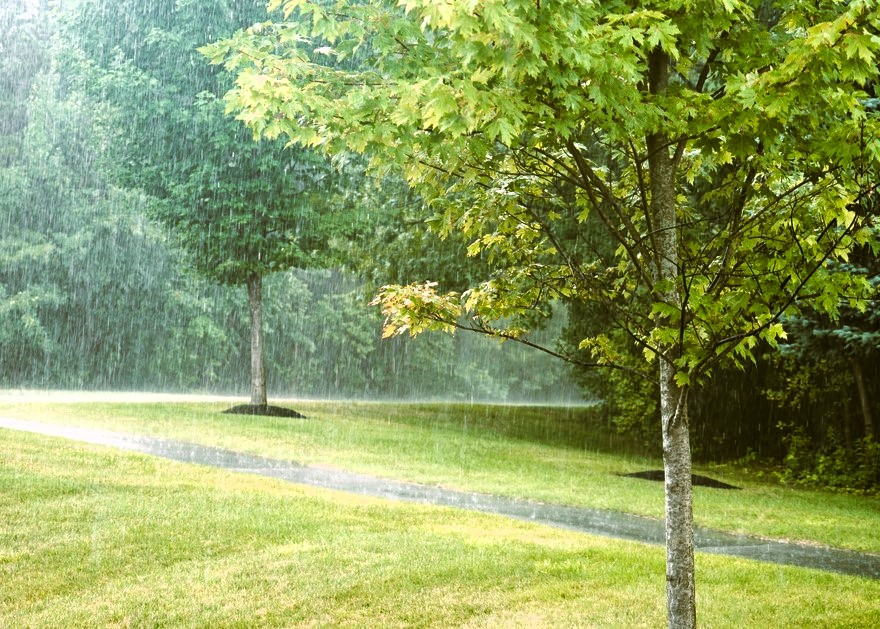April showers bring May flowers.
This saying has stood the test of time, but for us Michiganders it usually becomes “April and May showers.” With an extended rainy season, we are often asked about the prudence of mowing wet grass. While it’s generally advised to wait for a dry day, sometimes the relentless spring rains leave little choice. Here’s why it’s sometimes necessary to mow your lawn when it’s wet and how it can prevent long-term damage.
The Drawbacks of Delaying: Overgrown Grass and Lawn Health
The most compelling argument for mowing a wet lawn comes down to the health and maintenance of your lawn. In spring, grass can grow quite rapidly thanks to the combination of warmer temps and plentiful moisture. If mowing is continually postponed due to wet conditions, the lawn can quickly become overgrown. This isn’t just a cosmetic issue; longer grass blades can foster an environment for pests and diseases to thrive, which may lead to more serious lawn problems.
When left unchecked, overgrown grass can also create problems when it’s finally mowed. Mowing an overgrown lawn can result in a dense layer of grass clippings which smothers the lawn, blocking air and sunlight, and fostering disease and fungi. Cleaning up these clippings involves raking, bagging, and either setting them out for collection or taking them to a compost site, all of which can be time-consuming and costly. You could hire professionals like Good Guys for cleanup, but it’s an expense nonetheless. Regular mowing, even in wet conditions, maintains a healthier lawn and prevents these costly issues.
Short-Term Compromise for Long-Term Gain
There are indeed short-term drawbacks when mowing wet grass. Mowing wet grass can lead to uneven cuts due to the blades sticking together, and it can clog up mowers, making the task more difficult and time-consuming. There’s also the risk of the lawn mower tires spinning on wet grass and damaging the lawn – usually these spots are seldom and can be easily patched.
However, when balanced against the risks of a potential overgrown lawn, these drawbacks are often a necessary compromise. The key is to mitigate these short-term issues as much as possible. For instance, you can:
- Use a sharp blade: A sharper blade will cut more cleanly, reducing the tugging on wet grass blades that can lead to an uneven finish. Good Guys sharpens our blades regularly, and more often during periods of heavy growing.
- Cut less: Instead of waiting for the grass to become visibly overgrown, mow according to your regular schedule but adjust your mower to a higher setting. This way, you’re removing less of the blade and creating less wet grass clippings to contend with.
- Areas to avoid: Before starting, walk the lawn to identify any areas which may be waterlogged and should be avoided.
Best Practices for Wet Mowing
While mowing wet grass isn’t ideal, following the right techniques can significantly reduce any drawbacks:
- Wait it out, if possible: If your only chance to mow is immediately after the rain has ended, then it’s best to proceed and mitigate the risks of letting your lawn become overgrown. Mow slightly taller while following the other precautions above. On the other hand, waiting as long as you can allows the sun and wind to dry the grass as much as possible.
- Mow at a slower pace: This gives your mower time to handle the wet grass more effectively, reducing clumps.
- Alternate your mowing patterns: This helps prevent forming tire ruts if the surface of the lawn is softer than usual.
At Good Guys Lawn Care, we understand the challenges that come with maintaining a beautiful lawn through the unpredictable spring season. While mowing wet grass is not without its challenges, doing so responsibly can prevent the more severe issue of an overgrown, unhealthy lawn. Remember, a little compromise now can lead to a lush, beautiful yard that you can enjoy all summer long.
